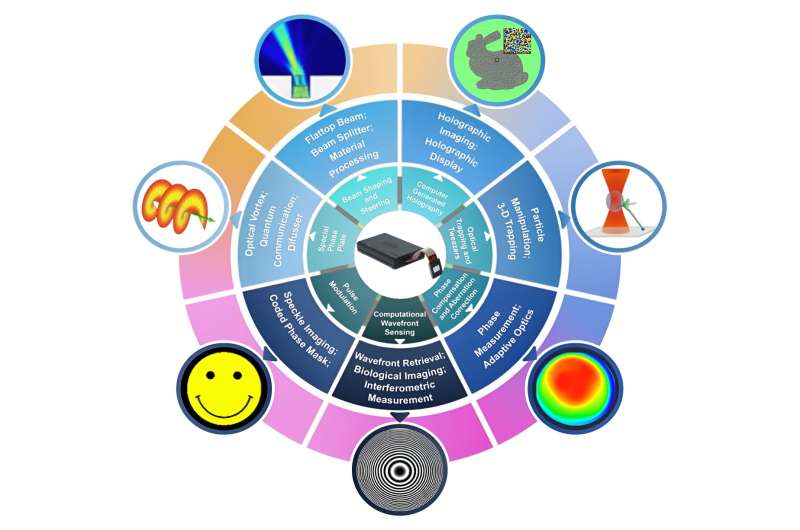This article has been reviewed according to Science X's editorial process and policies. Editors have highlighted the following attributes while ensuring the content's credibility:
fact-checked
proofread
A review of liquid crystal spatial light modulators devices and applications

Technology to control and harness light has existed for centuries, often as static solutions that must be custom-designed. It is only in the past couple of decades that the digital era of micro-electronics and computing has seen fast rewritable technology meant for displays find its way into the mainstream of optics.
In a new review published in Opto-Electronic Science, the authors showcase the recent advances in replacing the traditional static optical toolkit with a modern digital toolkit for "light on demand." The result has been the introduction of digitally controlled light to nearly all major optical laboratories worldwide, opening new paths for the creation, control, detection, and harnessing of exotic forms of structured light. The advanced toolkit promises novel applications from classical to quantum, ushering in a new chapter in on-demand structured light.
The authors of this article reviewed recent progress in using a modern digital toolkit for on-demand forms of sculptured light, offering new insights and perspectives on this nascent topic. The core technology that has advanced this field is the liquid crystal spatial light modulator (SLM), allowing high resolution tailoring of light in amplitude, phase, polarization, or even more exotic degrees of freedom such as path, orbital angular momentum, and even spatiotemporal control. These simple yet highly effective devices are made up of millions of pixels that can be modulated in phase, for spatial control of light in an in-principle lossless manner.
In the review, the authors show how such SLMs can be exploited for a myriad of tasks, from creating all forms of structured light to fast and efficient detectors. They have fueled advances in optical communication, microscopy, imaging and have even become indispensable in modern quantum optics laboratories.
It has brought the highly technical and difficult field of diffractive optics and digital holography very much into the mainstream, for anyone to access with relatively cheap solutions. For instance, diffractive optical elements as computer generated holograms could finally be exploited for what they are: just "pictures" to be displayed. SLMs have made this giant leap possible, overcoming the cost and complexity of prior solutions.
Most importantly, the "pictures" are rewritable, for on-demand real-time solutions for real-world applications. For instance, holographic optical tweezers allow light-matter interactions to be controlled with just a change to a picture (computer generated hologram), refreshing in real-time for trapping, tweezing and manipulating objects in 3D. This has seen direct application in physics, chemistry, medicine and biology, diverse fields of impact.
The authors unpack the mechanics of how SLMs work, provide novel insights and perspectives based on their long track record in the topic, revealing how this new field is rapidly accelerating along with the nascent topic of structured light. They suggest what the future may hold when present challenges are transformed into exciting applications.
More information: Yiqian Yang et al, A review of liquid crystal spatial light modulators: devices and applications, Opto-Electronic Science (2023). DOI: 10.29026/oes.2023.230026
Provided by Compuscript Ltd




















